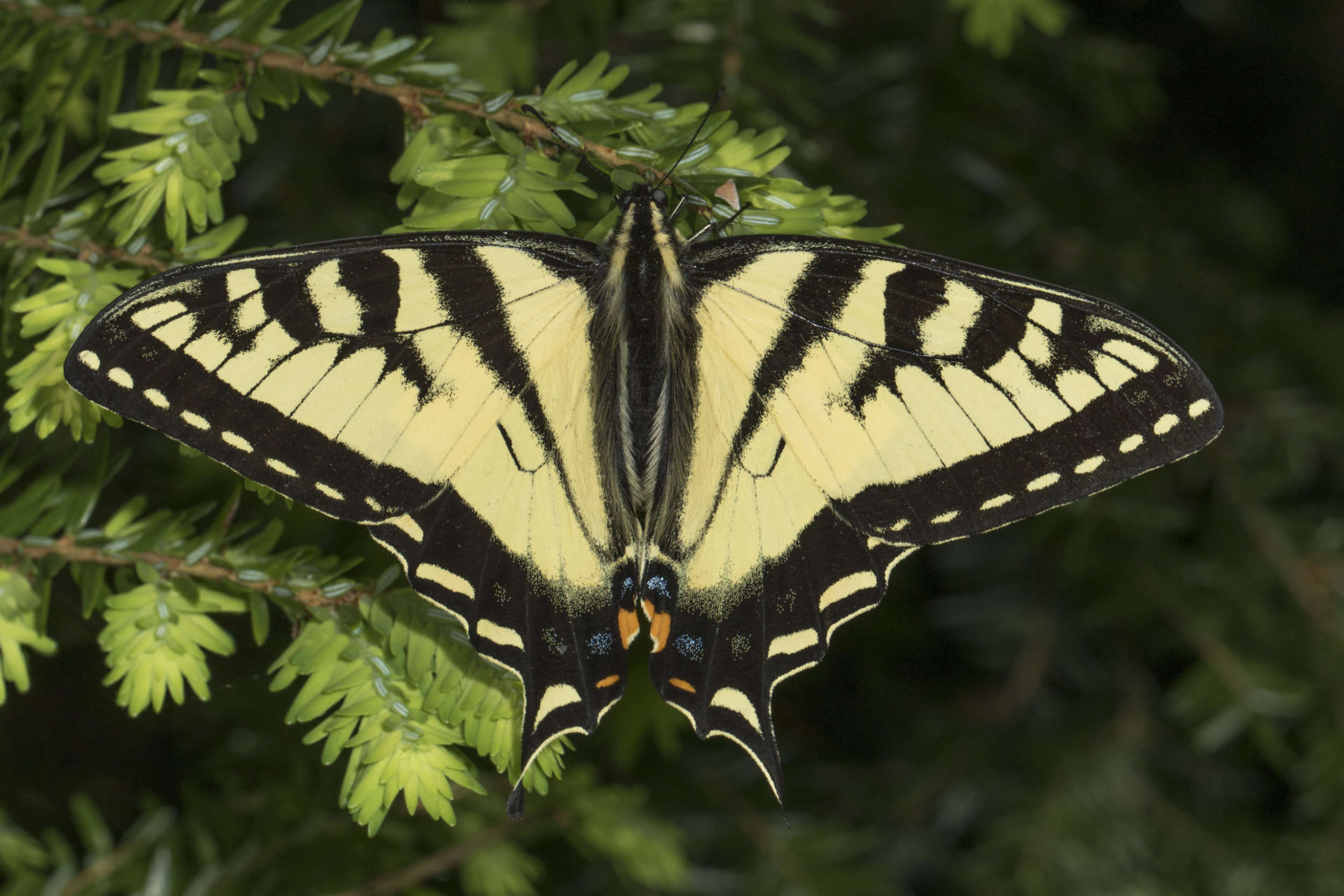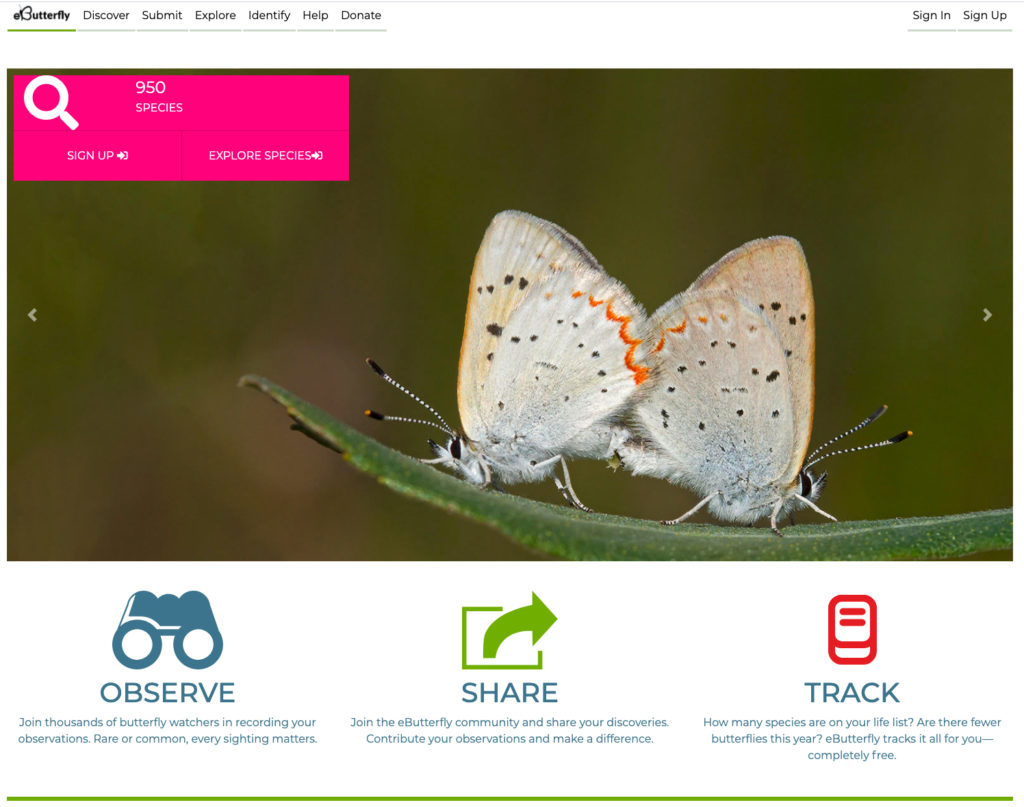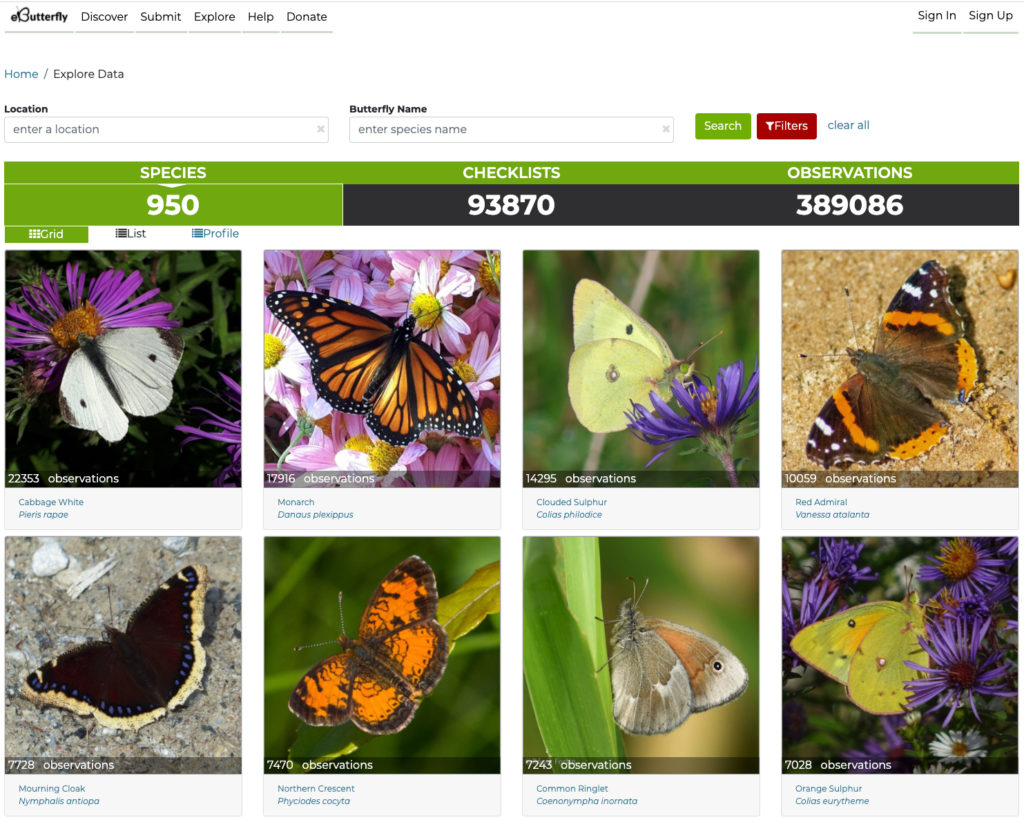It’s been over a year in the making. We’re excited to announce a completely new and retooled eButterfly. Now you can track butterflies you’ve seen from Panama to the Caribbean and north to the far reaches of the arctic, covering over 3,000 species of butterflies.
eButterfly now covers over 40 countries and more than 3,000 species, many of them rarely studied, the e-Butterfly.org site allows anyone to report, store, organize and view vast amounts of data on butterfly distribution and diversity across the region. e-Butterfly.org displays lists, photos and real-time maps of butterflies from its ever-growing reservoir of nearly 400,000 butterfly observations shared by nearly 8,000 observers like you.
Explore the new look and experience the social media-inspired features we’ve added to facilitate sharing and communication between users to make it a better experience for you and build a more connected and engaged eButterfly community. Here’s a few of our favorite new tools and improvements:
- A completely new design and user interface that is also smartphone and tablet compatible.
- Are you curious about a sighting or think an observation photograph is particularly fascinating? eButterfly now allows you to publicly comment on a checklist or observation, or send a private message to another user within eButterfly. Asking each other questions and discussing sightings live on eButterfly allows users to share and learn like never before.
- Now everyone can help verify butterfly records! We’ve created a more efficient and fun, crowd-sourced verification system for eButterfly. Borrowing from the experience of our friends at iNaturalist, we’ve implemented a whole new way for everyone to contribute. Virtual butterfly watching is almost as fun as the real thing!
- Perhaps you watch and count butterflies with a group of friends. Checklists can be shared with other users in the group so that only one person in the party needs to enter the data. After it is shared you can even customize the checklist to what you actually observed, keeping your life lists in perfect order.
- Do you like to track what you find in your butterfly garden or another favorite location? Now you can track your all-time or annual yard lists (or any area you choose) automatically.
- Soon, eButterfly will be available in French and Spanish too!
Getting Started with eButterfly
Check out our Help pages that will quickly get you started on using eButterfly. There’s a Quick Start Guide that takes you through each step when entering a butterfly checklist. Learn about our new crowd-sourced data vetting system and our identification tool and how you can quickly get started in helping to verify eButterfly data too. And learn how eButterfly helps you track your life, year, and month lists for countries, states and provinces, and even your favorite locations automatically!
Join an Upcoming eButterfly Webinar and Learn Even More
We invite you to join us for one of our webinars that will demonstrate how to use eButterfly and answer any of your questions.
- Thursday, May 21 at 6 PM Eastern Time
Join Zoom Meeting
https://vtecostudies-org.zoom.us/j/95084457892?pwd=azhsbVkrUHp5TjZ0Z2FoNkRnUDE5UT09
Meeting ID: 950 8445 7892 Password: 491565
- Tuesday, May 26 at 6 PM Eastern Time
Join Zoom Meeting
https://vtecostudies-org.zoom.us/j/92449028392?pwd=RWhjbGE0bWNUZ25SRSttMmthWlZMQT09
Meeting ID: 924 4902 8392 Password: 576274
Help us Build Big Butterfly Data for Science and Conservation
Similar to eBird, the ‘complete checklist‘ approach of eButterfly significantly increases the scientific value of each observation you share. Complete checklists allow you to collect abundance and information on co-occurring species while tallying effort (time and distance travelled), all at high spatial and temporal resolutions.
When combined and analyzed, these data enable us to build next-generation species distribution models that inform scientists on the movements of species range boundaries and areas of abundance across the landscape at an astounding level of temporal and spatial detail. It will help greatly with population monitoring and conservation decisions across the hemisphere. But we can’t do all of this without your help in gathering big butterfly data.
eButterfly has already been a source of discovery for several new species expanding their ranges far beyond what was previously known. From first records for the continent, like the Perched Saliana butterfly photographed and shared on eButterfly at Estero Llano Grande State Park in Weslaco, Texas in 2016, to the first Quebec record for Long-tailed Skipper photographed by a visitor right in the Insectarium gardens in 2016– there are many new state and provincial species discovered by eButterfly users in North America. Expanding to Central America and the Caribbean will really accelerate the rate of new discoveries in those countries where there’s been a lack of reporting.
A peer-reviewed study by researchers at the University of Ottawa compared eButterfly data to professionally-collected observations to measure the extent of new distributional and regional species richness information that opportunistic citizen science generates. eButterfly contributed new distributional information for ~80% of butterfly species, with volunteers detecting species significantly earlier each year than professionals.
“This really speaks to the ability and power of eButterfly’s citizen science approach,” said lead author Peter Soroye.
Every time butterfly watchers raise binoculars and cameras to record a butterfly sighting, they collect important data. Recording the number, date, and location of each and every butterfly, no matter how common or rare, may seem trivial, even repetitive— but this detailed information can be invaluable to science and conservation. Butterflies act as early warning signals for habitat degradation, climate change, and other ecological forces. Citizen science programs like eButterfly allow volunteers to submit checklists from anywhere, and can quickly amass large volumes of both historic and current observations.
eButterfly is the tool for any butterfly enthusiast. You don’t have to be an expert to make a difference. Everyone can play a part, and it couldn’t be easier. Just login to eButterfly and contribute your butterfly discoveries!









